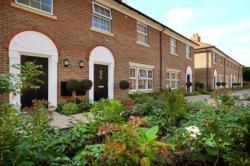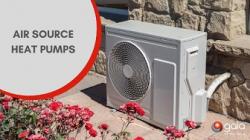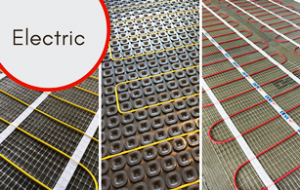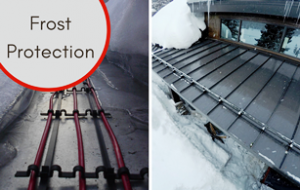GAIA CLIMATE SOLUTIONS LTD
Suppliers of: Electric Underfloor Heating, wet underfloor heating, frost protection, commercial underfloor heating, domestic underfloor heating
Here at Gaia, we’re a company with over 30 years’ experience offering total underfloor heating systems in commercial and residential properties across the UK and Ireland. We specialise in the design, supply and installation of both wet and electric systems as well as frost protection. Offering a wide range of underfloor heating solutions, our teams can advise and design the most suitable system for you, whether it’s a new build or refurbishment project; providing a professional service from initial project stage through to project completion.
We cover all projects from self-build, residential and commercial new builds, multiple apartment buildings, care and educational facilities.
We pride ourselves in building lasting relationships with customers who we continue to serve and celebrate in the success of the projects we deliver for them.
Our Systems: Electric Underfloor Heating / Wet Underfloor Heating / Frost Protection
In an electric underfloor heating system, a series of wires are installed beneath or within your flooring as a means of heating the room.
The electric system you install will depend on the size of the room and how well insulated it is. What the flooring below is like, whether it’s insulated and the type of flooring you’ll have on top. Options include loose-fit wiring, flexible enough to fit into small or awkward spaces, electric cable systems, or heating mats you roll out to cover larger areas.
Electric floor heating can be added without breaking up the old floor when a property is renovated. It’s quick and easy to install, making a new build project quicker to complete.
With a wet underfloor heating system, a series of pipes connected to your boiler circulate warm water throughout the floor to heat the space, similar to radiators. Alternatively, you can connect the underfloor water pipes to a solar hydronic heating system, air-source or ground-source heat pump. The pipes will be connected to your heat source using a manifold (essentially a central system allowing all the pipes to work together). The bigger the system, the more pipes it will have and the more complex the manifold will be. The system will also be fitted to a thermostat (or thermostats, if you’re having more than one zone) so that you can regulate the temperature.
We have various systems for you to choose from depending on your projects needs. We offer the full Gaia system which fits perfectly into screed, aluminium plates or grooved overlay; and we also systems from top brands Polypipe, Emmeti, Omnie and Myson. As a result, whatever your project requirements, we have a system to suit your needs.
We offer a wide range of frost protection and ice and snow melting systems for your project. From providing safe walking areas and driving during winter times through to protecting buildings and pipes from frost damage – we have the solution. If you want to install a system with the peace of mind that it will last through harsh winter conditions, our frost protection systems are fit for the job.
Our frost protection and snow melting systems are used throughout the world regularly protecting to temperatures of -30 deg Celsius.
Training professionals on how to specify and install underfloor heating systems is an essential part of the service we provide.
We offer a variety of CPD material on Electric underfloor heating, Wet underfloor heating and Frost Protection systems, designed to improve your professional knowledge and skills. It’s a platform for us to share our expertise on each heating system.
Our systems are fitted in new developments and renovations all across the UK and Ireland.
Further information and product advice is available on the Gaia Climate Solutions Website.
GAIA - Redcliffe Place, Tunbridge Wells
 Set within communal gardens near to the famous Pantiles of Tunbridge Wells formerly known as The Walks and the Parade, leading from the well that gave the town it’s name are the 26 elegant new houses and apartments of Redcliffe Place. One of our latest residential underfloor heating projects, designed by Beechcroft’s Special Projects division the 12 houses and 14 apartments required a discrete underfloor heating system that provides luxurious warm floors. The use of underfloor heating frees up the wall areas to allow greater flexibility with interior design in these properties.
Set within communal gardens near to the famous Pantiles of Tunbridge Wells formerly known as The Walks and the Parade, leading from the well that gave the town it’s name are the 26 elegant new houses and apartments of Redcliffe Place. One of our latest residential underfloor heating projects, designed by Beechcroft’s Special Projects division the 12 houses and 14 apartments required a discrete underfloor heating system that provides luxurious warm floors. The use of underfloor heating frees up the wall areas to allow greater flexibility with interior design in these properties.
Project Overview:
Project size: 3167m²
System: LTHW into screed on lower levels and overlay on upper levels
Date installed: September 2021
Residential Underfloor Heating Project Solution:
The client required the lower floors to be screeded, therefore we provided a pipe in screed system which can be concealed within the screed depth and most commonly used in new builds. For the upper floors they required a lower profile system, we provided a grooved insulation system which encases the pipe within the panels. By choosing this system it reduces the installation time as the insulation can be boarded strait over to provide a finished subfloor, with no curing time.
Screed
Quick installation
Low installation rate
Pipe spacing can be varied where required
Screed cover acts as thermal mass
70/Wm² at 50/40°C flow temperatures at 200mm pipe spacing. A room design temperature of 21°C and a floor resistance of no more than 0.1m²K/W.
Grooved Overlay
No screed, removing cost and drying time
Timber flooring can be installed directly on top
Faster heat up time
Can also be used in between joists
47W/m² at 50/40°C flow temperatures at 200mm pipe spacing. A room design temperature of 21°C and a floor thermal resistance of no more than 0.1m²K/W
We delivered the project on time for our client who we have developed a good working relationship with over the many years we have worked together, and our operations team installed the system ahead of schedule ensuring our clients project progressed as planned.
We offer floor build-up, heat loss calculation, technical drawings, manifold & control placement, project valuation, experienced install team, handover & commissioning and everything in between. We’re here to advise, guide and deliver your project. You can be confident in our service, products, warranties and insurances.
If you have an upcoming Residential Underfloor Heating Project that requires underfloor heating, complete our project quote form https://www.gaia.co.uk/request-quote/ and a member of the team will be in touch.
Photograph Credit – The Beechcroft Collection 2021
GAIA - Air Source Heat Pumps
 Air source heat pumps are very much in the spotlight as a viable alternative to gas boilers to run Underfloor Heating. Will this renewable heat technology be right for your project?
Air source heat pumps are very much in the spotlight as a viable alternative to gas boilers to run Underfloor Heating. Will this renewable heat technology be right for your project?
Heat pumps are the most efficient way to power wet underfloor heating systems. Unlike a gas or oil boiler, which heats water to between 65 and 85°C, a heat pump generates hot water at around 40 degrees.
35 – 45°C is a good temperature for underfloor heating, and as it’s inefficient to heat water only to cool down again before you use it, a heat pump is an ideal choice – efficiently producing hot water at the ideal temperature for underfloor heating.
It is important that the system is designed correctly, and essential that your property is well insulated and draught-proof for the heating system to be most efficient. With its large heat emitting area and low input temperature requirements underfloor heating provides the ideal choice to offer the maximum efficiency from the heat pump.
The benefits:
Virtually no maintenance
Lower your home’s carbon emissions
Lower your fuel bills
Air-to-water heat pumps qualify for the Renewable Heat Incentive – a government scheme which could pay homes in England, Scotland and Wales towards the cost of home renewable heating https://www.ofgem.gov.uk/environmental-and-social-schemes/domestic-renewable-heat-incentive-domestic-rhi
Easier to install than a ground source heat pump
Can be used for heating and cooling (depending on the model)
Long lifespan
Air source heat pumps absorb heat from the air outside, it can get heat from the air even when the temperature is as low as -15°C.
You will need a place outside of the property to position the unit which can be fitted to a wall or placed on the ground. Plenty of space around the unit is required for a good flow of air, sunny walls are ideal. Inside, you’ll usually have a unit containing pumps and hot water. It’s usually smaller than a standard boiler.
In order to achieve Net Zero by 2050, the UK government aims to install 19 million heat pumps in new build properties. With the increase in heat pump being rolled out across the country, the UK government grants make this renewable energy source even cheaper to run and reduces the burden of air source heat pump costs. Heat pumps are expected to be a better, low-carbon alternative to heating properties in the foreseeable future.





